The Scania Chronicle
Page 6
By Christoph Büch and Steve St.Schmidt (Berlin 2023)
Series 2 from 1980:
Consistent modular principle
In 1980, Scania presented a completely new range of vehicles. Series 2, sometimes referred to as the GPRT series, was the first fully modular truck series in the world. Four cab variants were available:
G extra low cab with two steps, short (G for Geisha)
P low cab with three steps, short or long (P for Pretty)
R high cab, short or long (R for Royal)
T cab for hood wagon, short or long (T for Torpedo)
There was a choice of three frame load capacities, the code letters of which could be read from the outside next to the model designation:
M for distribution and regional transport (M for medium)
H high rigidity for long-distance transport (H for heavy)
E double frame rails for construction sites and heavy transport (E for extra heavy)
The basic models were now called 82, 112 and 142, and the letters L standing for conventional and LB for cab-over were dropped. It was possible to choose and combine different wheel configurations, transmissions and various 2.1 to 3.7-gallon engines with a further, sometimes considerable increase in performance. The result was a variety of possible truck models, whose high number of identical parts benefited cost-optimized production.
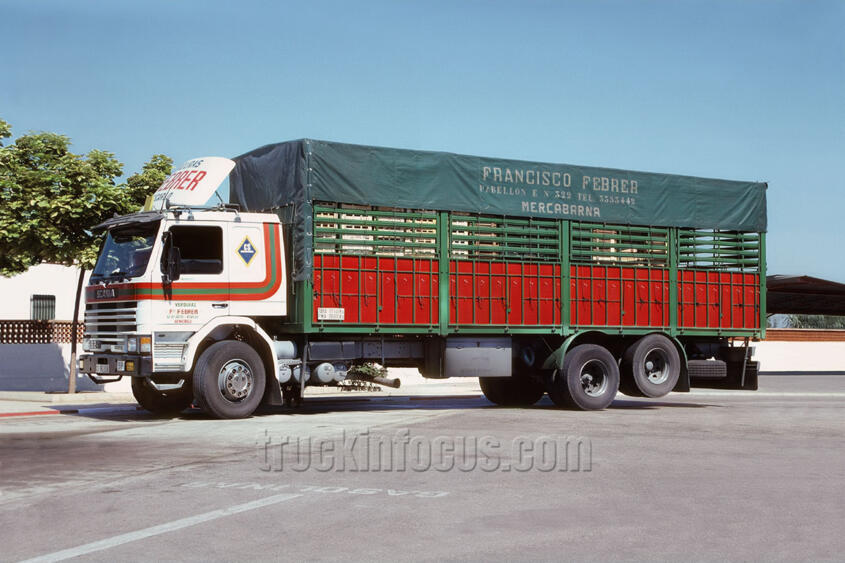
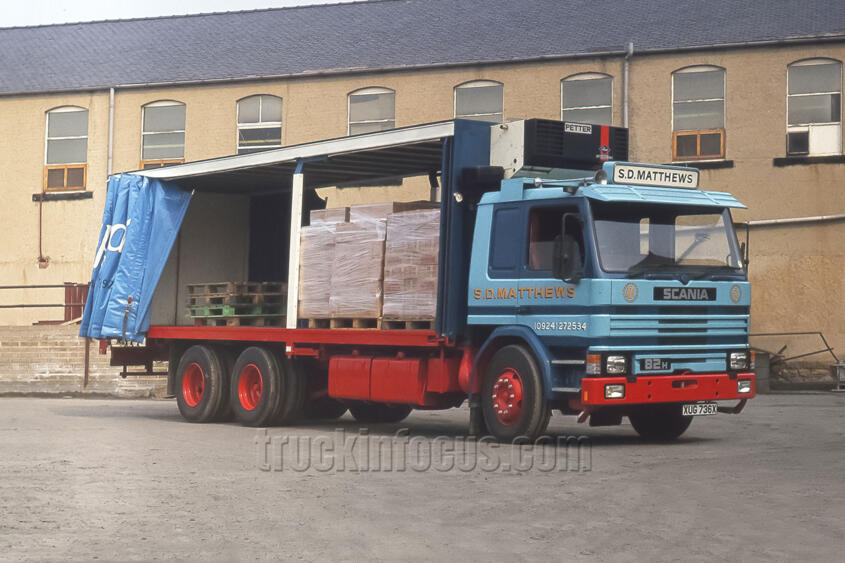
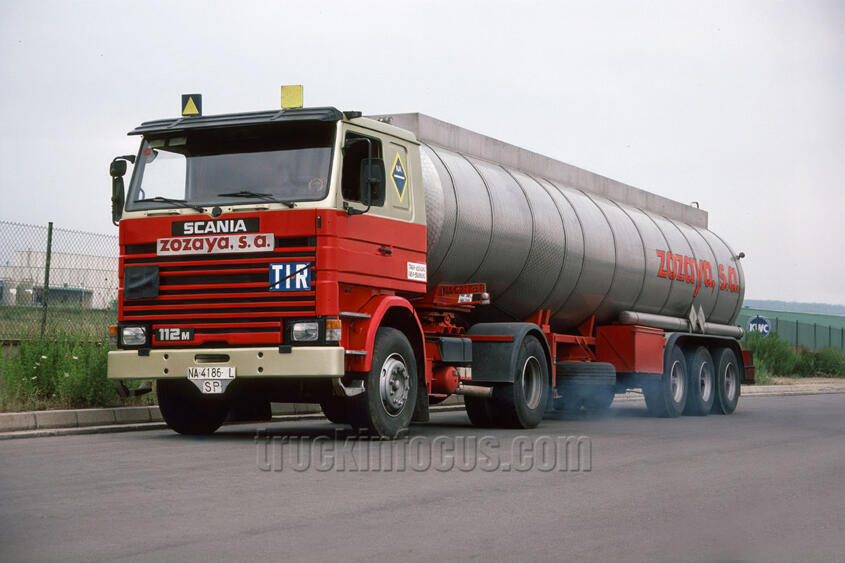
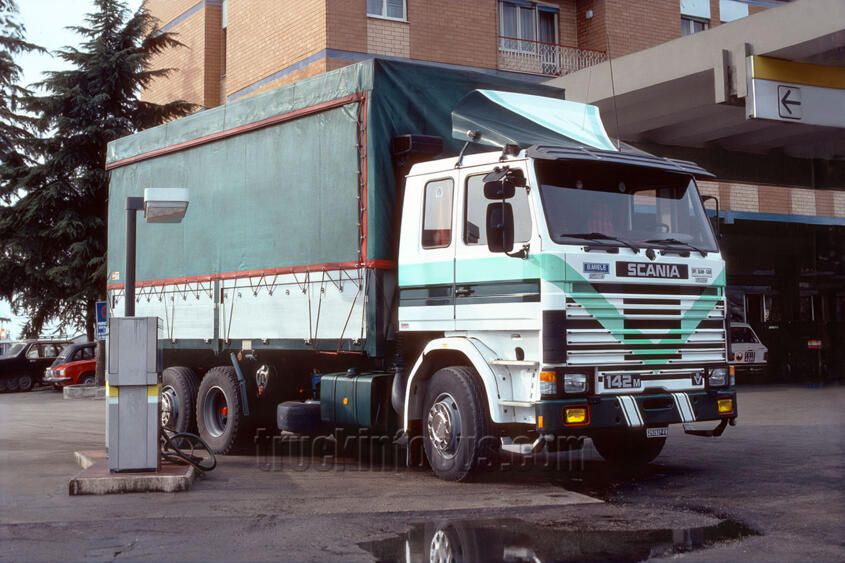
The design of the cab was created in collaboration with industrial designer Giorgetto Giugiaro and his team at Italdesign in Turin. The design was deliberately based on the predecessor series with the typical horizontal slats at the front. The windshield, which had previously been vertical on the cab-over models, was tilted by 20 degrees to improve aerodynamic resistance after tests were carried out with scaled-down models (1:10 and 1:2) in a wind tunnel in the UK. Even earlier, the trucks, like the technology, were based on a modular system with as many identical parts as possible. This principle was consistently developed further in the new models. The driver's cab of the conventionals and the cab-overs was identical. The old conventional trucks dating back to the 1950s were finally history.
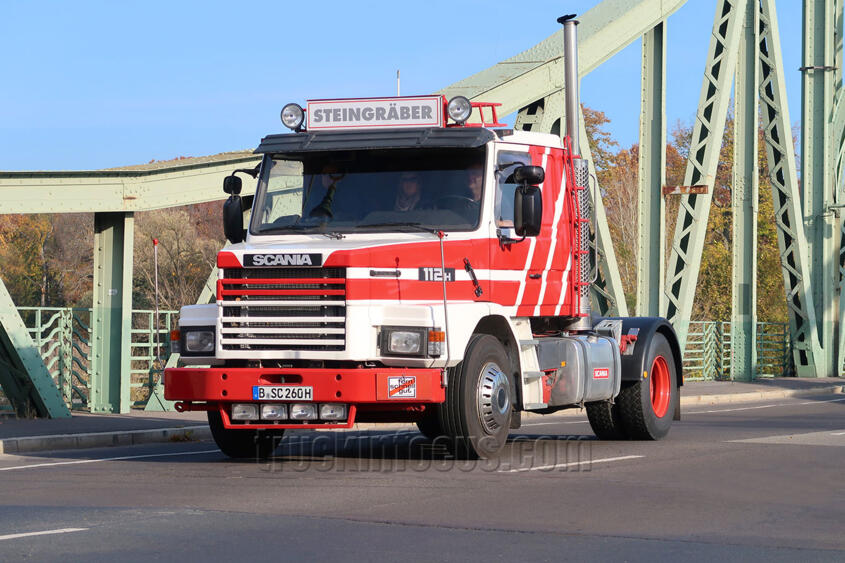
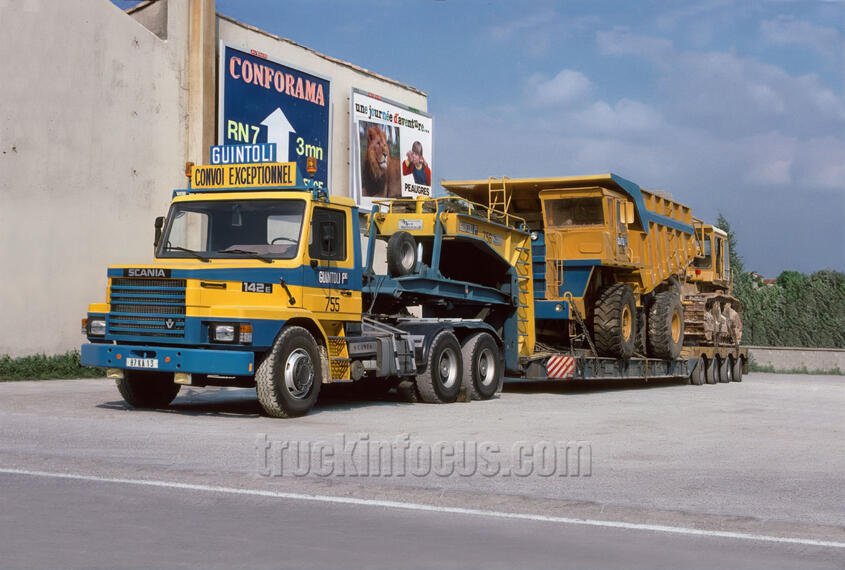
At the 1983 Turin Motor Show, Scania presented its flagship model, the R 142 with intercooler, which increased power to 420 hp. This innovation was recognizable by the "Intercooler" lettering next to the V8 logo. The exterior of the vehicle remained almost identical, but in order to accommodate the intercooler, the designers had to create a modified radiator grille that looked identical at first glance, but extended the front by two inches. Compared to the versions without intercooler, the area with the Scania lettering between the windshield and radiator grille was no longer completely vertical, but slightly slanted. For the first time, the exclusive "King of the Road" equipment was offered for this version, recognizable by the large lettering on the spoiler. The standard equipment was unprecedented: auxiliary heating for the cab and engine, air conditioning, hi-fi radio with cassette deck, lower spoiler, fog lights, air horns, heated exterior mirrors, tinted windows, special side trim strips, two sun loungers, velvet interior trim and rear air suspension.
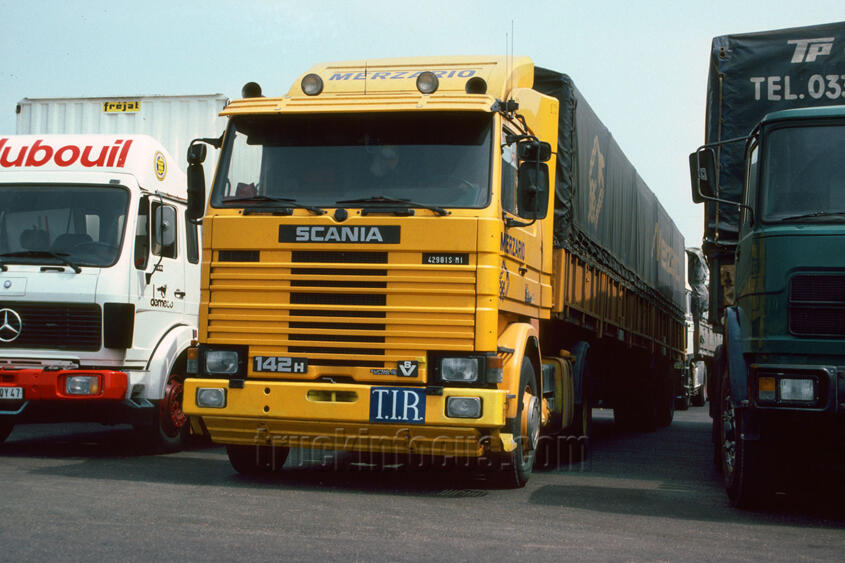
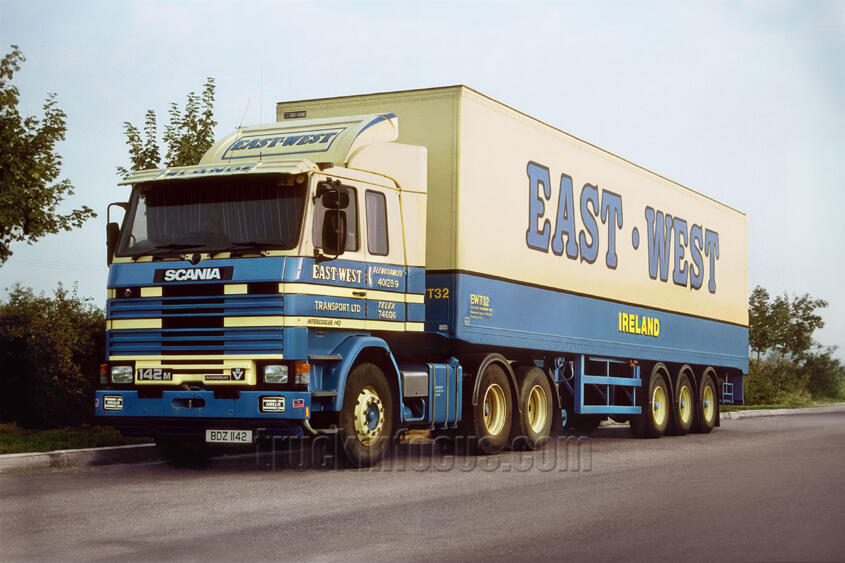
The conventionals of the 112 T and 142 T model series also received the intercooler. To create space for this, the hoods had to be extended forwards by a few inches, recognizable by a new radiator grille that was extended at the sides.
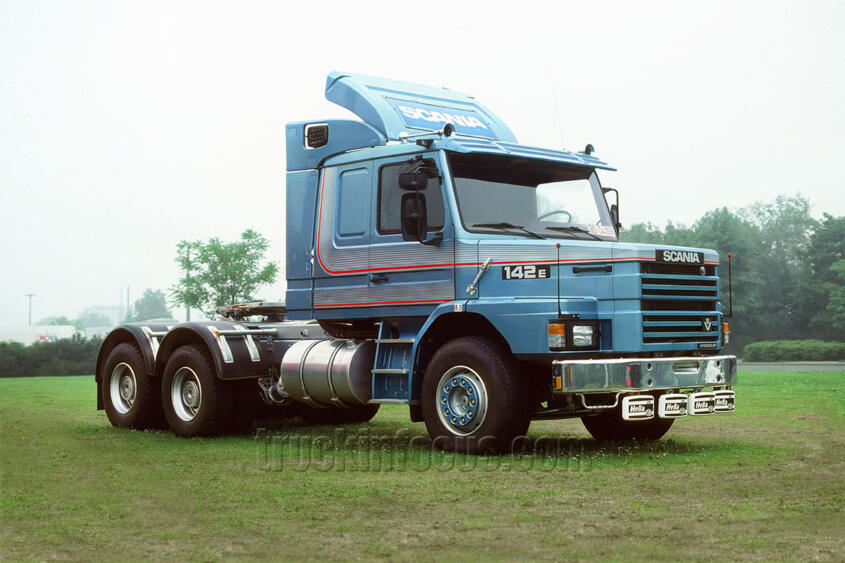
Gradually, all turbocharged engines were fitted with the intercooler, which ensured greater economy, performance and efficiency. This principle was soon followed by all other manufacturers. In 1984, Scania was the first European truck manufacturer to launch an electronic gearshift aid under the name CAG (Computer Aided Gearshift). In 1985, the 82 model was given a new drive. The 2.1-gallon engine (DN 8, DS 8 or DSI 8) was replaced by a 2.4-gallon engine (DS 9 or DSC 9). Consequently, the type designation of the vehicles changed from 82 to 92. It is also worth noting that from 1985, all Scania cab panels were galvanized.
In 1984, the Scania lettering on the front of the vehicles and in the advertising also changed. A more modern and dynamic-looking typography with consecutive capitals replaced the previous lettering consisting of single letters, which had been used since 1975.
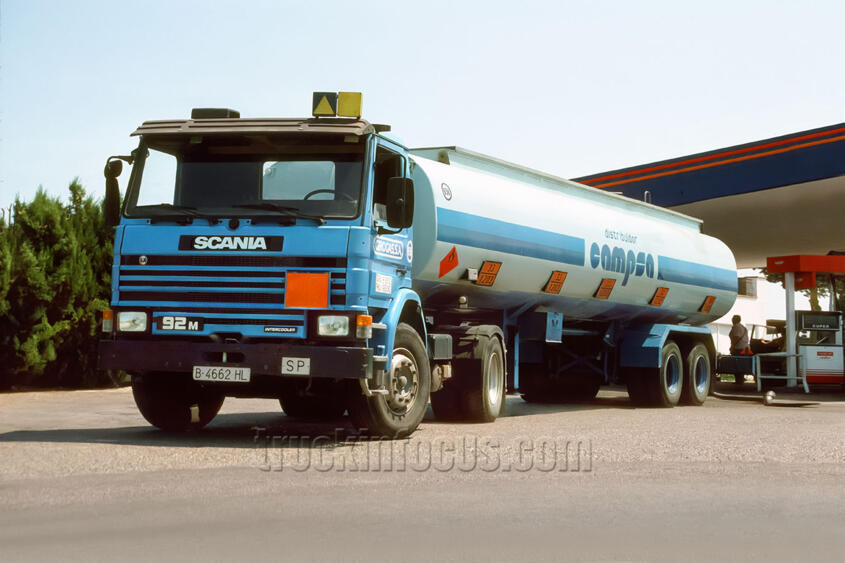
The "small" 2.4-gallon engine now produced 300 hp, the 2.9-gallon six-cylinder reached 360 hp and the large 3.7-gallon V8 was once again at the top of Europe's performance league with 420 hp.
The 1980s were successful for Scania. Production rose from 25,566 vehicles in 1980 to 35,602 in 1989, with an export share of 80 to 95 percent. New assembly plants were built in South Korea, Tanzania, Botswana and Zimbabwe. Scania had long since become a global player.